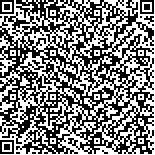本文已被:浏览 1435次 下载 4464次
投稿时间:2013-09-30 修订日期:2014-06-26
投稿时间:2013-09-30 修订日期:2014-06-26
中文摘要: 利用NCEP/NCAR再分析资料和西藏高原气象观测站逐日降水资料对1980—2011年5—9月967个伊朗高压东伸影响高原个例进行了分析,将西藏高原降水分布类型分为大雨型、中雨型、小雨型和无雨型四类分布,分别有158、516、165和128 d;当伊朗高压脊线偏北(南)时,500 hPa的南北气流辐合偏强(弱),200 hPa辐散偏强(弱),高原上的降水偏大(小);伊朗高压东伸除直接影响西藏高原的环流外,当其脊线偏北(南),索马里越赤道急流强度偏强(弱),导致孟加拉湾水汽输送多(少),高原降水偏强(弱)。
中文关键词: 伊朗高压, 西藏高原, 汛期降水, 环流分析
Abstract:Using the NCEP/NCAR reanalysis data and the Tibetan Plateau meteorological stations daily precipitation data from May to September 1980-2011, 967 cases of Iranian high eastward stretching effecting Tibetan Plateau are analyzed. Precipitation over Tibetan Plateau is classified into 4 types, which are heavy rain pattern, moderate rain pattern, light rain pattern and non rain pattern with corresponding total days of 158 d,516 d,165 d and 128 d. As Iran high ridge line is more northerly (southerly), 500 hPa north south flow convergence is stronger (weaker) and 200 hPa divergence is larger (smaller) so that greater (smaller) precipitation occurs on the plateau. In addition to the direct impact of Iran high impacting on general circulation over Tibetan Plateau, its ridge line is northerly (southerly), Somali jet is stronger (weaker), the Bay of Bengal water vapor transport is stronger (weaker), indirectly leading to more (less) precipitation over Tibetan Plateau.
文章编号: 中图分类号: 文献标志码:
基金项目:公益性行业(气象)科研专项(GYHY201006040)和中国气象局新技术推广项目(CMATG2010M25)共同资助
引用文本:
林志强,薛改萍,何晓红,2015.伊朗高压东伸对西藏高原汛期降水的影响[J].气象,41(2):153-159.
LIN Zhiqiang,XUE Gaiping,HE Xiaohong,2015.Effects of Eastward Stretching Iran High on Precipitation in Rainy Season over Tibetan Plateau[J].Meteor Mon,41(2):153-159.
林志强,薛改萍,何晓红,2015.伊朗高压东伸对西藏高原汛期降水的影响[J].气象,41(2):153-159.
LIN Zhiqiang,XUE Gaiping,HE Xiaohong,2015.Effects of Eastward Stretching Iran High on Precipitation in Rainy Season over Tibetan Plateau[J].Meteor Mon,41(2):153-159.

